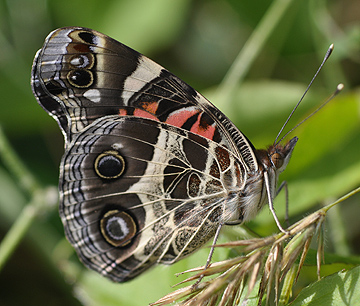100 Hessian Avenue, National Park, NJ
Phone: (856) 853-5120
www.co.gloucester.nj.us/depts/p/parks/parkgolf/redbank/default.asp
Gloucester County Parks and Recreation
This is the first stop on the trail.
From I-295, take exit 22 for Red Bank Avenue West. After 0.5 miles, turn Left onto Hessian Avenue. After 1.2 miles, turn Left into the parking area for Red Bank Battlefield Park. Map
NEAREST PUBLIC TRANSPORTATION: New Jersey Transit Bus Lines No. 455 Cherry Hill Mall/Woodbury/Paulsboro stops at Grove Avenue & Hessian Avenue. Walk 5 blocks on Hessian Avenue. Walking distance is less than 1 mile.
The various landmarks associated with the ruins of Fort Mercer and the cannons and other memorials to the Battle of Red Bank throughout the park are historically pertinent. They have been dedicated at different eras over the centuries since the battle and display commemorative scenes and thoughts from the times.
Follow the fence between the main parking area and the ball field South to reach the dredge spoil area, which is more secluded and wild than the park. For birders this area is full of surprises amid the tall weeds and along woodland edges, especially in spring and fall. Rare migrants recorded here include Connecticut Warbler, Blackburnian Warbler, Mourning Warbler, Canada Warbler, Philadelphia Vireo, Willow Flycatcher, Bobolink, Dickcissel,Vesper Sparrow, Lincoln’s Sparrow, Winter Wren, Lesser-Black-backed Gull, Black Scoter, Bobwhite, and Rough-legged Hawk, among others.
| |
 |
| American Lady | Will Kerling |
| |
The site of the Battle of Red Bank in 1777, this large, picturesque riverside tract has lawn areas and assorted oak, maple and conifer forest. There is also an adjacent dredge spoil area that affords some good wildlife viewing. A parking area near some monuments to the Battle of Red Bank overlooks the Delaware River, providing good views of waterfowl on the river throughout the year. The Whitehall House, built in 1748, was the make-shift hospital during the pivotal battle. There are also playgrounds, picnic pavilions and a paved walking track.
Early spring mornings offer good wildlife viewing. Grassland birds feed on the lawns. Waterfowl float on the river and nesting birds inhabit the dredge spoils.
Check evergreens thoroughly for signs of owls. The cold wind that blasts from the South over the river and the panorama makes the parking lot overlook a great place to scan for waterfowl such as Canvasback, Goldeneye, and Great Cormorant from the warmth of a car. A hike within the overgrown mounds in the dredge spoils has wind protection in a quiet winter setting. Look for Swamp, American Tree, White-crowned and Savannah Sparrows among more common Song and White-throated Sparrows.
Early spring mornings offer good wildlife viewing. Woodland bird migrants such as American Redstart, Black-throated Green and Black-Throated Blue Warblers and Northern Parula rest and feed at this site on their voyage north along the river.
Abundant numbers of newly fledged juvenile birds can be seen feeding on seeds on the lawns. The mammal population is active and can be observed in the early mornings. Nesting raptors populate the park and are commonly seen perched on snags at the top of trees on the lawn. Nesting songbirds include Yellow Warbler, Common Yellowthroat, Chipping Sparrow and others.
Songbird migration peaks in late September/early October. The deciduous trees change to their autumn colors. Interesting migratory waterfowl from the North can be seen on the river, including Loons, Mergansers and Scaups. These birds arrive to roost in the trees or on the small island in the early evening and are active feeding in the mornings.
|